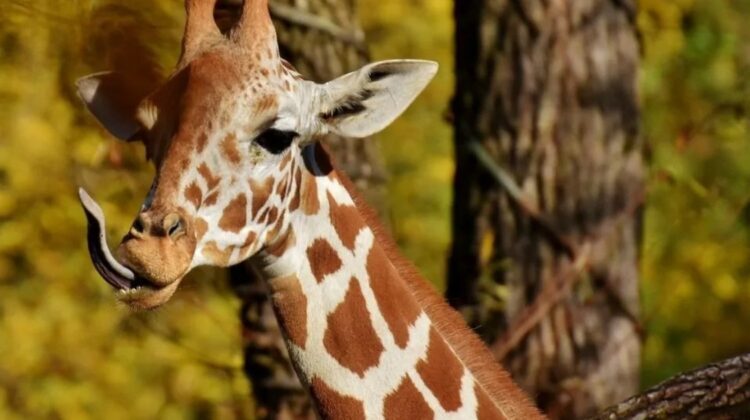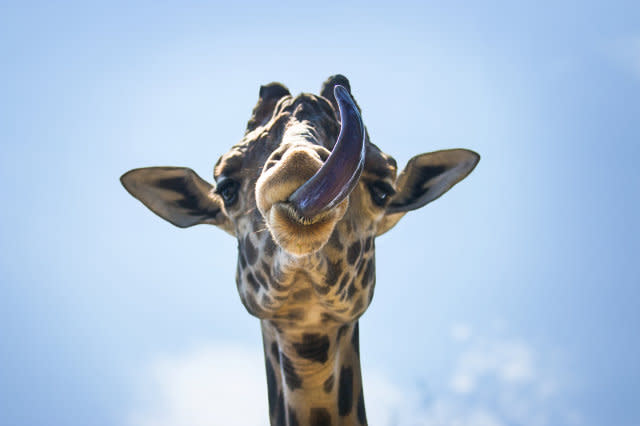
The Unique and Magnificent Giraffe
The giraffe is an awe-inspiring animal known for its towering height and massive weight. This creature is found primarily in South Africa and stands up to 20 feet tall, weighing up to 3500 pounds. However, one of the most intriguing things about the giraffe is its blue-black tongue, which is unlike any other mammal.

The Adaptation of a Dark Tongue for Feeding
The giraffe’s dark tongue has a unique purpose that sets it apart from other mammals. The giraffe’s diet consists of leaves from acacia trees, which have sharp thorns to protect them from grazing animals. To avoid injury, the giraffe’s long tongue, up to 18 inches in length, can reach high leaves while avoiding the thorns. The tongue is also protected by a thick layer that prevents injury from the thorns.

Protection from the Sun’s Harmful Rays
The giraffe’s tongue also has melanin, which is the pigment that gives human skin its color when exposed to the sun. Since giraffes spend around 12 hours a day eating and exposing their tongues to the sun, the dark color of their tongues protects them from harmful UV rays. This feature helps prevent sunburn and other harmful effects from prolonged sun exposure.

The Impressive Adaptation of the Giraffe’s Tongue
The giraffe’s tongue may not be the most attractive feature, but it is a fascinating and highly specialized adaptation. This adaptation has helped the giraffe survive in its environment and thrive as a species. So the next time you spot a giraffe with a dark tongue, remember the unique and impressive reason behind this adaptation.


Leave a Reply